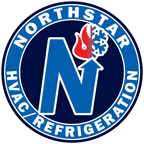Impact of A2L Refrigerants on the HVAC Industry
Written by Ed Rice
What Are A2L Refrigerants?
A2L refrigerants are a class of refrigerants that are mildly flammable and have a lower Global Warming Potential (GWP) compared to traditional refrigerants like HFCs (hydrofluorocarbons). Examples of A2L refrigerants include R-32 and R-454B, which are increasingly being used as replacements for higher-GWP refrigerants such as R-410A. The "A2L" classification is based on their toxicity and flammability ratings:
A = Low toxicity
2L = Lower flammability (compared to more hazardous refrigerants in the Class 2 category)
Impact of A2L Refrigerants on the HVAC Industry
The upcoming 2025 refrigerant regulations are part of a broader shift toward lowering the environmental impact of HVAC systems. These regulations are driven by the Kigali Amendment to the Montreal Protocol, which aims to phase down HFCs due to their high GWP and contribution to global warming. The U.S. Environmental Protection Agency (EPA) has also been actively setting targets for reducing HFC use under the American Innovation and Manufacturing (AIM) Act.
Key Impacts of A2L Refrigerants on the Industry:
Transition to Low-GWP Refrigerants: A2L refrigerants are being adopted to meet regulatory requirements for reducing greenhouse gas emissions. By 2025, many HVAC systems will need to use low-GWP alternatives to meet these new environmental standards. A2Ls, with a much lower GWP than traditional HFCs, are seen as a primary solution.
System Design Changes: Because A2L refrigerants are mildly flammable, their adoption requires changes in system design and installation protocols to ensure safety. This includes new safety standards for handling and leak detection, proper ventilation, and adherence to building codes designed for flammable refrigerants.
Technician Training: The use of A2L refrigerants necessitates updated training for HVAC technicians to safely install, maintain, and service systems using these refrigerants. Special equipment and tools may also be required to handle A2L refrigerants safely due to their flammability properties.
Cost Considerations: The transition to A2L refrigerants and the new systems designed for their use may come with initial costs, both for manufacturers and end-users. However, the increased energy efficiency and reduced environmental impact are expected to offset these costs over time.
Energy Efficiency Gains: A2L refrigerants are often more energy-efficient than the high-GWP refrigerants they replace. For example, R-32, one of the leading A2L refrigerants, has been found to be more efficient than R-410A, leading to reduced energy consumption and lower operational costs.
Challenges and Opportunities
While the transition to A2L refrigerants presents challenges in terms of flammability management and retrofitting older systems, it also offers significant opportunities for the HVAC industry to lead the way in sustainability and energy efficiency.
The 2025 regulatory changes represent a pivotal moment for the industry, and companies like Northstar Refrigeration can play a crucial role in helping businesses transition to compliant systems using A2L refrigerants. This can include helping with system upgrades, technician training, and ensuring compliance with safety and building codes.
Conclusion
A2L refrigerants are set to play a major role in the future of the HVAC industry, driven by environmental regulations aimed at reducing global warming potential. Their adoption will require careful planning, new safety standards, and training, but the benefits—both environmentally and economically—are substantial. If you’re preparing your business for the 2025 transition or exploring more sustainable HVAC solutions, Northstar Refrigeration can provide the guidance and expertise needed to navigate these changes effectively.
Feel free to contact us at (508) 888-3692 to learn more about how we can assist with the transition to A2L refrigerants and support your sustainability goals.
(508) 888-3692
www.northstarhvacr.com
Edward Rice
Director of Marketing,
Northstar Refrigeration, Inc.
95 Camelot Drive, Unit 1,
Plymouth, MA 02360
erice@northstarhvacr.com www.northstarhvacr.com
p: (508) 888-3692 x115
m: (508) 561-8638



